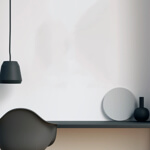Walter Richard Sickert 1860-1942
The Old Bedford
Black and white chalk on paper
27.3 x 21 cms
10 11/16 x 8 4/16 ins
10 11/16 x 8 4/16 ins
457
Sold
Sickert's approach to drawing was pragmatic and the results extremely varied. He was not afraid to experiment, just as in his writing he was not averse to changing his mind....
Sickert's approach to drawing was pragmatic and the results extremely varied. He was not afraid to experiment, just as in his writing he was not averse to changing his mind. Before embarking on a painting he would make countless drawings before a model or on site. Often on scraps of paper, he had a disregard for his materials that bordered on the reckless. A drawing was apparently little more than a working tool, certainly not something about which to be too precious and his numerous drawings are often on the flimsiest of paper. Whether thick or thin, rough or smooth, white or coloured, Sickert would use whatever was to hand, from brown paper bags to wrapping paper.
Whilst Sickert's repertoire of subjects may have gained followers, his radicalism has also gained admirers even from artists whose work is fundamentally different. Frank Auerbach, for example, whilst emphasising that 'there is not the slightest attempt to emulate or follow Sickert or the Camden Town School1, has also written of his admiration for the artist, characterising him as 'an immensely experimental, abstract minded, inventive, systematising draughtsman.2
the late 1880s Sickert began a major series of paintings of music halls. Reflecting an interest in the subject that is to be found in the paintings of both Degas and Manet, the stage, orchestra pit, performers and audiences would swiftly become a central aspect of Sickert's work of the 1890s.
The Bedford Music Hall in Camden Town was built in 1861 and burnt down in 1896 (and so was later referred to as the Old Bedford in order to avoid confusion with its successor, the New Bedford, which Sickert also depicted).
The Old Bedford is characteristic of the type of study that Sickert made on site. It is drawn on a folded sheet of brown paper that may well be wrapping paper and is double the dimensions of the finished work, suggesting that for ease of drawing on site Sickert simply folded it in half.
1. Frank Auerbach, unpublished interview with JH, July 1990
2. Frank Auerbach, unpublished letter to JH, 18 June 1992
Whilst Sickert's repertoire of subjects may have gained followers, his radicalism has also gained admirers even from artists whose work is fundamentally different. Frank Auerbach, for example, whilst emphasising that 'there is not the slightest attempt to emulate or follow Sickert or the Camden Town School1, has also written of his admiration for the artist, characterising him as 'an immensely experimental, abstract minded, inventive, systematising draughtsman.2
the late 1880s Sickert began a major series of paintings of music halls. Reflecting an interest in the subject that is to be found in the paintings of both Degas and Manet, the stage, orchestra pit, performers and audiences would swiftly become a central aspect of Sickert's work of the 1890s.
The Bedford Music Hall in Camden Town was built in 1861 and burnt down in 1896 (and so was later referred to as the Old Bedford in order to avoid confusion with its successor, the New Bedford, which Sickert also depicted).
The Old Bedford is characteristic of the type of study that Sickert made on site. It is drawn on a folded sheet of brown paper that may well be wrapping paper and is double the dimensions of the finished work, suggesting that for ease of drawing on site Sickert simply folded it in half.
1. Frank Auerbach, unpublished interview with JH, July 1990
2. Frank Auerbach, unpublished letter to JH, 18 June 1992
Exhibitions
A Century of Drawings, James Hyman Gallery, London, 2 July - 29 August 2003From Life: Radical Figurative Art From Sickert to Bevan, James Hyman Gallery, London, 10 September - 18 October 2003, (cat. 1)




